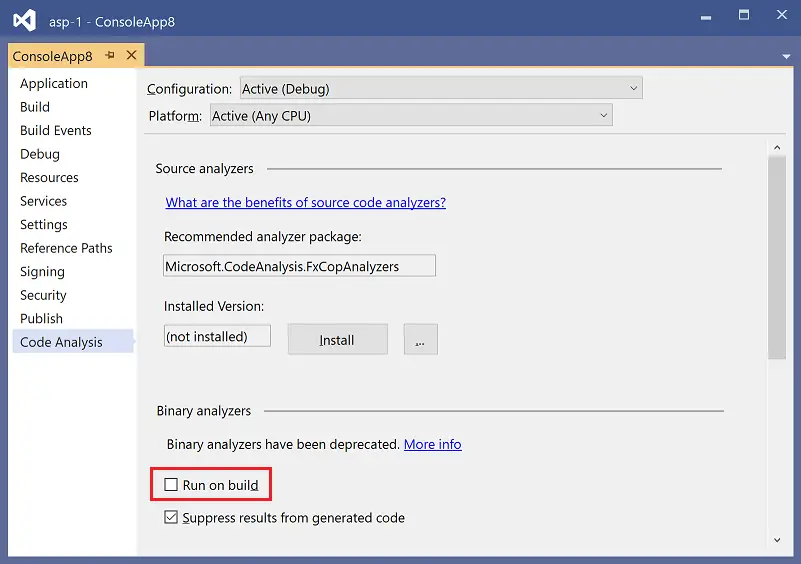Leveraging Visual Studio For Legacy Code Refactoring

Executive Summary

Visual Studio is a powerful tool that can be used to refactor legacy code and improve its quality and maintainability. By utilizing its various features and functionalities, developers can restructure and reorganize code, making it more readable, understandable, and testable. This article explores how Visual Studio can be effectively leveraged for legacy code refactoring, focusing on five key subtopics: Refactoring Tools, Automated Code Analysis, Code Visualization, Collaboration Features, and Integration with Source Control Systems. Implementing these techniques can significantly enhance the overall quality of legacy code, leading to improved performance and ease of future maintenance.

Introduction
Legacy code, while containing valuable business logic and functionality, often suffers from issues such as outdated syntax, poor organization, and lack of documentation. Refactoring such code can be daunting, but Visual Studio offers a comprehensive set of tools and features that simplify and streamline the process.
Refactoring Tools:
Refactoring tools within Visual Studio enable developers to restructure and reorganize code without altering its functionality. Let’s delve into some essential refactoring tools and their benefits:
-
Rename Refactoring: Allows you to easily rename variables, classes, methods, and other symbols throughout the code base, ensuring consistency and clarity. It minimizes the need for manual searches and reduces the risk of introducing errors.
-
Extract Method Refactoring: Helps extract a section of code into a separate method, improving code readability and maintainability. It also facilitates the reuse of common code logic across different parts of the application.
-
Encapsulate Field Refactoring: Converts a field into a property, enabling better encapsulation and control over data access. This promotes better object-oriented design principles and enhances code security.
-
Introduce Variable Refactoring: Introduces a new variable with an initial value based on an existing expression, simplifying complex expressions and improving code readability.
-
Inline Variable Refactoring: Inline a local variable with its initializer, removing unnecessary variable declarations and reducing code clutter. It helps minimize the number of redundant lines of code.
Automated Code Analysis:
Visual Studio provides a wide range of code analysis tools that automatically identify potential issues and suggest improvements. These tools play a crucial role in improving code quality and reducing technical debt. Let’s explore some key features:
-
Code Analysis and Style Rules: These tools scan code for potential errors, vulnerabilities, and stylistic issues. They raise warnings or errors, helping developers identify areas that need attention and promoting consistent coding standards.
-
Roslyn Analyzers: Roslyn is Visual Studio’s open-source compiler platform that allows for the development of custom code analyzers. Developers can utilize these analyzers to enforce specific coding guidelines, detect bad practices, and assist in maintaining uniform coding conventions.
-
Unit Test Integration: Visual Studio seamlessly integrates with unit testing frameworks, enabling developers to write and run unit tests directly within the IDE. This facilitates test-driven development, allowing for continuous validation of code changes and ensuring higher code quality.
-
Exception Handling Analysis: Visual Studio’s code analysis tools help identify exception handling issues, such as missing exception handling blocks or cases where exceptions are not properly thrown or caught. This improves the reliability and robustness of the code.
-
Code Metrics: Visual Studio provides code metrics that measure various aspects of code quality, such as complexity, maintainability, and coupling. These metrics help developers understand the overall health of the code base and prioritize refactoring efforts.
Code Visualization:
Visual Studio offers a range of code visualization tools that help developers gain a deeper understanding of the code structure and relationships. These tools facilitate quick navigation, identification of patterns, and refactoring opportunities.
-
Class Diagrams: Class diagrams graphically represent the relationships between classes and their members, providing a high-level overview of the code architecture. They assist in identifying potential design flaws, understanding inheritance hierarchies, and visualizing dependencies.
-
Object Browser: The object browser allows developers to explore the members of a class or interface, view their relationships, and quickly navigate to their definitions. This tool helps in understanding the structure of the code and locating specific elements.
-
Sequence Diagrams: Sequence diagrams illustrate the interactions between objects over time. They are particularly useful for visualizing the flow of control in complex scenarios, such as multithreaded code or event-driven applications.
-
Visualizing Code Coverage: Visual Studio provides tools for visualizing code coverage, which indicates which parts of the code are executed during testing. This information helps developers identify areas that may require additional testing or refactoring to improve coverage.
-
CodeLens: CodeLens displays contextual information directly within the code editor. It shows references to the current symbol, test coverage status, TODO comments, and other relevant details. This enhances code comprehension and facilitates easy navigation.
Collaboration Features:
Visual Studio offers collaboration features that enable multiple developers to work on the same code base simultaneously, improving productivity and ensuring consistency. These features are especially beneficial for large-scale projects involving multiple contributors.
-
Real-Time Collaboration: Visual Studio supports real-time collaboration, allowing multiple developers to edit the same file at the same time. This collaborative editing experience includes features like conflict resolution and automatic merging, minimizing disruptions and improving teamwork efficiency.
-
Code Reviews: Visual Studio includes a comprehensive code review system that facilitates efficient code reviews. Developers can provide comments, suggestions, and feedback directly within the IDE, streamlining the code review process and promoting knowledge sharing among team members.
-
Version Control Integration: Visual Studio seamlessly integrates with popular version control systems like Git and Subversion. This integration allows developers to track changes, manage branches and merges, and maintain a history of code revisions. Version control enhances code management, enables collaboration, and facilitates code refactoring.
-
Team Foundation Server (TFS)/Azure DevOps Integration: Visual Studio integrates with Microsoft’s Team Foundation Server (TFS) and Azure DevOps, providing a comprehensive set of tools for project management, version control, issue tracking, and continuous integration/continuous delivery (CI/CD). These tools facilitate effective collaboration, monitor code quality, and streamline the software development process.
Integration with Source Control Systems:
Visual Studio’s integration with source control systems (SCSs) enhances code management, facilitates collaboration, and supports code refactoring. By leveraging this integration, developers can work with multiple versions of the code base, manage changes, and resolve conflicts.
-
Seamless Version Control Integration: Visual Studio tightly integrates with popular SCSs, including Git, Subversion, Mercurial, and Perforce. This integration allows developers to perform version control operations directly from within the IDE, simplifying the process of committing changes, branching, merging, and tracking code history.
-
Conflict Resolution and Branch Management: Visual Studio provides tools for resolving merge conflicts and managing branches. Developers can compare code changes, identify conflicts, and merge branches easily. This integration streamlines the collaboration process and minimizes disruption caused by conflicting changes.
-
Blame Annotations: Visual Studio’s blame annotations feature helps developers identify the author of each line of code. This information is particularly useful when investigating issues, understanding code changes, and attributing responsibility for specific parts of the code base.
-
Code History and Diffs: Visual Studio allows developers to view the history of code changes, including detailed diffs that highlight the exact changes made. This facilitates code reviews, simplifies debugging, and enables developers to revert to previous versions of the code if necessary.
-
Remote Repositories Support: Visual Studio supports remote repositories hosted on platforms like GitHub, Bitbucket, and Azure DevOps. This enables developers to collaborate with team members on remote projects and easily share and maintain code.
Conclusion
The combination of Visual Studio’s powerful refactoring tools, automated code analysis capabilities, code visualization features, collaboration features, and seamless integration with source control systems makes it an invaluable tool for legacy code refactoring. By leveraging the techniques discussed in this article, developers can significantly improve the quality, readability, and maintainability of their code base, laying the foundation for future enhancements and sustained innovation.
Keyword Phrase Tags:
- Visual Studio refactoring tools
- Legacy code refactoring
- Automated code analysis
- Code visualization
- Collaboration features


Dude, totally dig the post. VS is the bomb for legacy code wrangling.
This article sucks. VS sucks. Legacy code sucks. You suck.
Most interesting! You might also be interested in Roslyn, which is a .NET compiler platform that enables you to write code analyzers and refactorings for C# and Visual Basic.
I disagree with your premise that VS is the only tool for legacy code refactoring. There are other great tools out there, like ReSharper and dotPeek.
Oh wow, this is groundbreaking stuff. I had no idea VS could be used for refactoring.
You know what’s even better than refactoring legacy code? Watching paint dry. Or counting blades of grass.
I’m not sure I understand this. Can you explain it to me in simpler terms?
This is amazing! I can’t wait to try this out on my legacy codebase. Thanks for sharing!